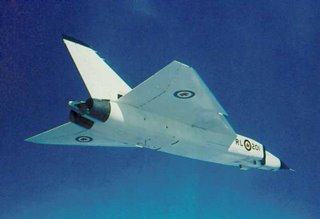Janusz 'Zura' Zurakowski 1914-2004





Janusz "Jan" Zurakowski was born on September 12, 1914, in Ryzawka, a region of Poland that became part of the Soviet Union after World War I. Zurakowski was interested in aviation at an early age as his elder brother flew gliders. In 1929, Jan won a national competition for building model planes and the prize was a 15-minute flight. This set him on his life's course. After completing high school, in 1934, Zurakowski joined the Polish Air Force. In 1937, he became a lieutenant pilot, and soon became a flying instructor.
At the outbreak of World War II, Zurakowski was a flying instructor. After the Nazis attacked on Sept. 1, 1939, he scored his first success against a German Dornier 17, while flying an obsolete biplane fighter/trainer. When Poland fell to enemy forces, Zurakowski escaped to England, joined the Royal Air Force and during the Battle of Britain was credited with destroying three enemy aircraft. Later, he joined Polish Squadrons, serving as Flight Commander and Squadron Leader. For his wartime services he was awarded the Polish Virtuti Militari Cross and the Polish Cross of Valour with three Bars.
In 1945, Zurakowski was posted to the Aircraft and Armament Experimental Establishment where he tested Britain's first jet fighter, the Vampire. Jan retired from the RAF in 1947, and then joined the Gloster Aircraft Company as chief experimental test pilot, flying Meteor and Javelin fighter aircraft. Jan and Anna were married in Paris in 1948. They lived for a few years in Britain, where Jan continued his career as a test pilot. During his career, Zurakowski also demonstrated a new air stunt called the "Zurabatic Cartwheel" and established a new air speed record in 1950 between London-Copenhagen-London. In 1950 he set an international speed record flying between London and Copenhagen in a Meteor aircraft. In 1951, he demonstrated the "Zurabatic Cartwheel" considered to be the only new manoeuvre in 20 years.
In 1952, he immigrated to Canada to join Avro Aircraft in Malton, Ontario, as chief development pilot. That same year he became the first to break the sound barrier, in Canada, flying a CF-100 fighter aircraft. His display of the CF-100 to the Europeans at Farnborough in 1955 (the first non-British aircraft allowed to display there) is legendary.
When the Avro Arrow, Canada’s pride in aeronautical engineering and design achievement, was ready for testing, Zurakowski, completed the much-heralded first flight of this supersonic aircraft. A short and unassuming man, Zurakowski climbed aboard the Avro Arrow RL-201 for its first flight at 9:51 p.m. on March 25, 1958, at Toronto Malton Airport under hazy sunshine. All the plant employees and many dignitaries attended this event. When Jan landed, he was hoisted shoulder-high by the cheering crowd. It was a fitting tribute to the Arrow and its pilot.
On his 7th flight, Zurakowski pushed the jet to 1,600 kilometres an hour and tests indicated the Arrow, with its twin Iroquois engines, could become the world's most advanced interceptor. In August, 1958, he tested the second Arrow to come off the production line. Jan retired from flying on October 1, 1958. Normal retirement age for high-speed test pilots was 40, and he was already 44. He became the Liaison engineer for the Arrow, but this proved to be a very temporary job.
The Arrow was conceived to protect Canada during the height of the Cold War in the 1950s, when the Soviets had introduced new long-range bombers capable of flying over the North Pole to attack North America. It was intended to replace the Avro Canada CF-100 Canuck as a supersonic all-weather receptor. But soaring costs and the development of competing missile technology prompted Conservative Prime Minister John Diefenbaker to cancel the 10-year-old project in 1959, leading the aircraft company A.V. Roe to lay off 14,000 employees while the government ordered all plans and prototypes destroyed. Zurakowski retired before the Arrow project was cancelled by the government, but remained bitter about the cancellation for numerous years.
Zurakowski tested over 100 planes, with the Arrow being the last one. In recognition of his contributions to Canadian aviation, Zurakowski received numerous awards. In 1958, he received the MacKee trophy for his experimental work



<< Home